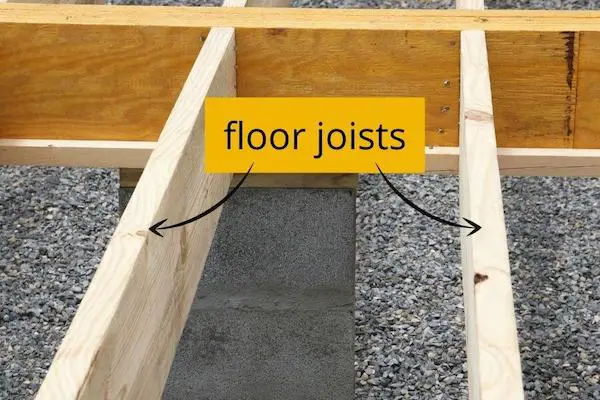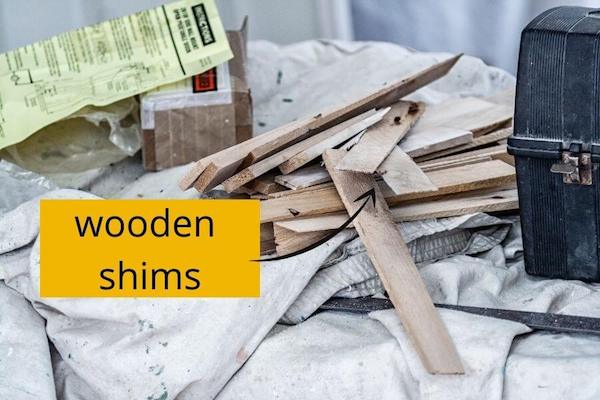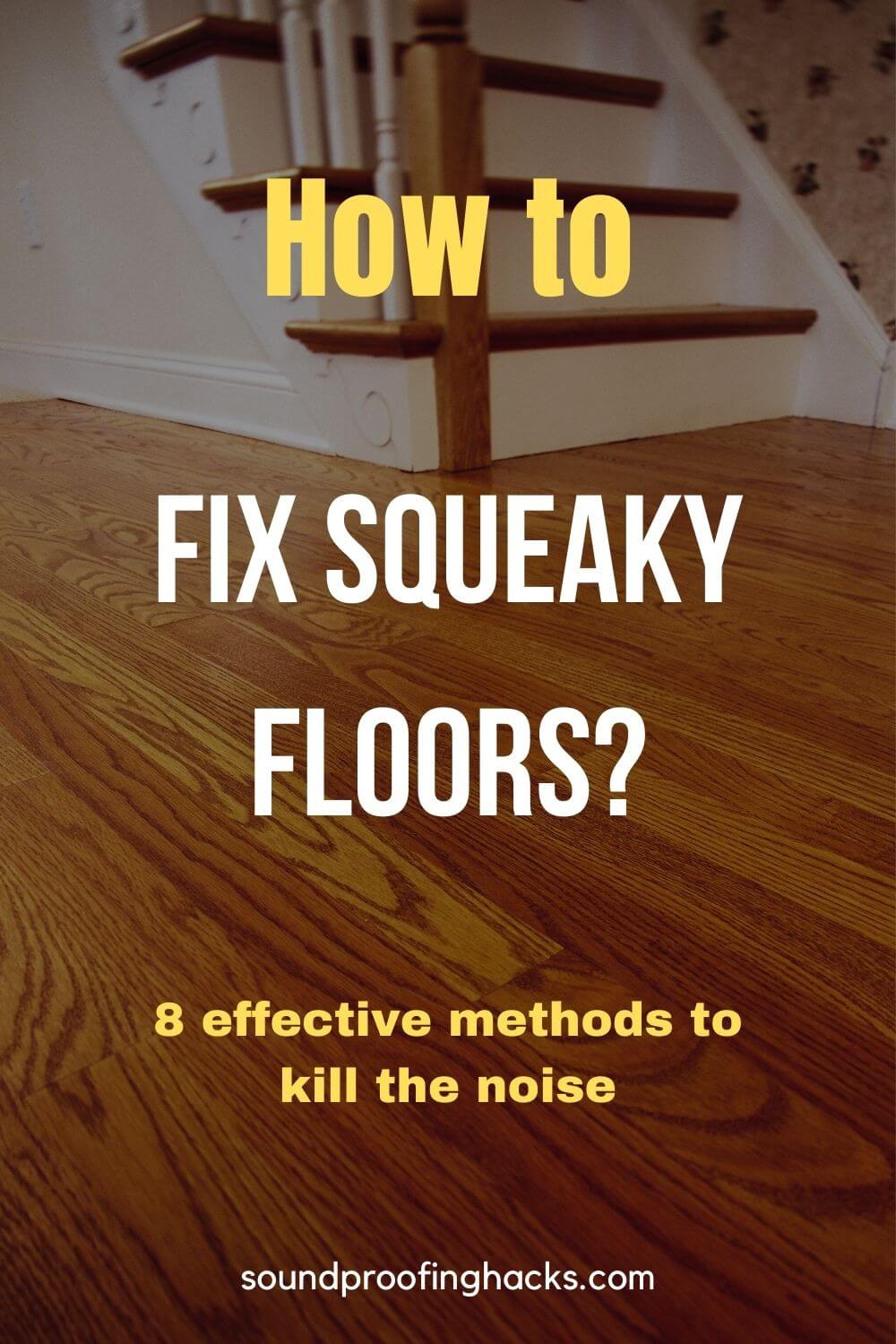How to fix squeaky floors in apartment or home: 8 effective steps
Squeaky floors are one of those things that can really drive a person nuts, more so in the middle of the night when everyone is fast asleep and the sudden high pitched tone wakes them up. If you find yourself in such a situation, this post will show you how to fix squeaky floors in apartments or homes effectively and get rid of that annoyance once and for all!
In general, hardwood floors and staircases are the most common areas where squeaks or creaks happen, so that’s where we will look at closer in this article. Another area you might be interested in is reducing floor vibrations, which in itself can be just as annoying.
It doesn’t make a difference whether you live in an apartment or a house. If there are squeaky floors, they need to be fixed! Both the person who caused it or the one at the end of it can finally have a peace of mind.
Let’s read on to find out how to solve your nightmare.
I am an Affiliate for Amazon and others, which means I may make a commission if you purchase something through the links here. There is NO extra cost to you at all, and THANK YOU so much for the support. Learn more here.
Contents: Skip to section
Why are your floors squeaking?
Before going into the ways you can fix creaky floors, let’s take a look at what caused them in the first place.
In most cases, squeaky floors are caused when the subfloor begins to separate from the floor joists. The nails that holds them together becomes loose and produces squeaking noises when they move about. The wooden boards also rub together, adding to the noise.
On a more serious level, the floor joists might have become damaged, causing the nails to come loose. The result is squeaking or creaking floors. If you realize you have such an issue, you might want to consult a professional about potential repair work.
Simple ways to fix squeaky floors
The sections below lay out the ways and steps you can take to reduce floors from squeaking. Whether you have access or not, there’s definitely something you can do to reduce the impact of the noise.
Hey, quick one. If you intend to start a soundproofing project soon, check out our Best Materials for Soundproofing post to get a headstart. Most projects require similar materials, so this post will save you a ton of time researching.
1. Locate the squeaky spots
Before you go about fixing the squeaky noises, you need to figure out where it is coming from first. If you live in a house and the noise is coming from upstairs, it is very easy to tell the area that is affected, down to the individual floorboard or joist.
Take note of the exact spot, or you can take a photo and circle the spots where you know the squeaks are happening.
To be more sure, you will need a partner to help you out. Have the other person walk around the level above while you take notes of where the squeaking is coming from. The person above can also use duct tape to mark out all the spots where they hear the noise.
Once you have found the spots, you need to ascertain the source. Is the noise coming from the floorboards being loose, or is it coming from deeper inside the floor? If it is from inside the floor, the most likely reason is the subfloor plywood rubbing against the joints.
Unfortunately, if the noise is coming from an upstairs neighbor’s apartment, the options to fix it might be quite limited. You will have to speak to them about the issue and work out a solution to it. You can hire a professional, or consider trying out the steps below. In an extreme case, you might consider removing the drywall off your ceiling to solve this problem permanently.
2. Insert piece of wood between floor joists

As mentioned earlier, the main cause of floor squeaks is due the the subfloor becoming separated from the floor joists. When somebody walks across the floor, the pressure causes movement in these parts, and the nails start to squeak as they slide up and down in their positions.
The easiest way to fix this is to insert a piece of wood between the gaps. This in turn supports the subfloor and lessens the amount of movement when someone walks across it.
3. Use a shim or fluid adhesive for smaller gaps

Squeaky noises are not necessarily caused by large gaps. Sometimes, small gaps will have a significant impact too. In such cases, you will not want to use a large piece of wood. You can use a shim instead.
A shim is basically a piece of tapered wedge that is used to level out things, most often used in home improvements. They are mostly made of wood but they do come in plastic as well, which is rot and water resistant. These are mostly used in plumbing applications.
In this case, you can insert a piece of shim between the subfloor and the joists. This should greatly reduce or remove the noise totally. However, you should take note not to use a piece of shim that is wider than the gap, as you do not want to aggravate the problem and cause a wider gap than necessary.
An alternative is to use fluid adhesives. This is most useful when the gap is long and thin, where inserting a shim is impractical. You may fill the gap by using construction adhesives, caulk, or wood filler.
4. Tighten the subfloor to the floor with screws
This step will require a bit more handiwork than the above.
Most floors are made with 2 layers: the subfloor and the hardwood floor above it, and they can be separated too, just like between the subfloor and the joists.
If you know that the problem is caused by the subfloor being separated from the floor itself, you can tighten up the gap by using short screws. Make sure that you are using a short screw that will not extend into the floor when doing this. It just needs to be long enough to hold the 2 surfaces together.
Some people might actually insert a screw into the floor and extend into the joists, but I find that this method is rather ugly and kind of destroys your floor. I would avoid doing this, unless you have no other options or you have no way to access the subfloor. Also, you should not try this if you are a tenant! Your landlord is not going to be very happy about it!
And also, if you use this method, make sure that the nail is fully driven into the floor and has not exposed ends. You do not want any accidents to happen when someone steps on it or get scratched by it.
5. Fixing the squeak for carpeted floors
If your place is carpeted, the job becomes slightly more complicated. Locate the exact spot of the squeak first, and using a utility knife, cut a small hole but make sure it is not complete. You can just cut 3 sides of a square.
Lift the carpet to expose the floor surface.
In this case, you can drive a screw through the floor into the subfloor to tighten things up.
When you are done, you can simply cover the hole by flattening the carpet back in place.
6. Sprinkle talcum powder
This might seem like a surprising method but it does work sometimes. Talcum power is commonly found in households, or readily available from hardware stores, which makes this one of the easiest ways to fix a squeaky floor.
Sprinkle a coating of talcum powder on the affected area and use a dry paint brush to help move them into the gaps.
The powder is not acting as a lubricant of sorts to stop the rubbing of the nails and wooden boards. However, as you might imagine, this is not a permanent fix and will require you to repeat the steps once you realize the noises returning.
7. Install joist hangers or brace
When you observe from below that the joists are unstable, you might want to use a set of joist hangers instead. Essentially, they are metal inserts that can be lodged in between the subfloor and joists to create a small support structure.
They can keep your floors and decks sturdy and durable, which in my opinion is a great home improvement project I would take on whether there is squeaking or not.
You can check out the video below to learn how to install a joist hanger, or simply search on YouTube as there are lots of great instructional videos about it.
https://www.youtube.com/watch?v=1hv27hrOz0g
8. Install soundproof floor underlayment
This last method is the most complicated of all the steps listed in this post, but should produce the best results that can last for a long time. It can be a step to consider after trying out the steps above but not seeing the results you want.
This step will require you to work on the floorboards, which is great if you have access to the floor or if you have concrete floors instead.
Soundproof underlayment is a great way to stop floorboards from creaking, and although there are quite a number of different materials you can use, the end result is pretty much the same.
To put it simply, you are adding a layer below your floorboards to soften it and add more stability.
As this is a pretty big project, you will definitely need to set aside enough time to plan for it and acquire the materials required, most importantly the type of underlayment.
If you have a brand new house, this could be something worth doing before moving in.
Learn more about soundproofing a wooden floor for more information.
Materials and tools for this project
Wood filler
Caulk
Joist hangers
Underlayment
Talcum powder
Underlayment
Frequently Asked Questions
Are landlords required to provide soundproofing between floors?
The honest truth is no, landlords are not required to provide soundproofing between floors. You can also check out why apartments aren’t soundproof too.
The best way to prevent this problem is to do your due diligence when viewing an apartment or a house. Take note of potential trouble spots that requires your attention. If you are a tenant, you may point them out to the landlord and request for a resolution. Putting it in the contract would be the best, but in my experience, landlords will hardly entertain such requests. While they might be willing to make small improvements to the house, it is unlikely they will add this into the contract.
Why does my floor squeak in winter?
If you have noticed, squeaks start to come about during the colder months. This is because the conditions in the house becomes much drier, causing the wood to contract. This in turn leads to more movement in between the floor components. In such conditions, nails can come loose, causing the squeaking noise to be more pronounced.
Do rugs help squeaky floors?
Rugs and carpets will not fix squeaky floors as the underlying issue is below the surface. Rugs and carpet can help to diffuse the noise they make, but not get rid of them. Something you can consider doing is to place furniture or decor on rugs above squeaky spots. This means no one will walk across them, therefore removing the noise. Of course, this has to be in spots that are practical to place furniture.
Should I worry about squeaky floors?
In general, no. They are not structural issues nor do they indicate the presence of termites. If however you discover large cracks in your floor joists, I would recommend hiring a professional to take a look.
Can I sue my upstairs neighbor for squeaking floors?
Owners of apartments in multi story wood frame buildings might have certain clause written to protect them from noise caused by flooring. However, it is unlikely that suing will get you anywhere, not forgetting that your relationship with your neighbor will forever be damaged. I would recommend talking to them first to come up with a resolution or check with the managing agent (if any).
Thanks for reading till the end. Soundproofing Hacks is supported by users like yourself. If you found our content useful, consider buying us a coffee here. It goes a long way in keeping our doors open. Thank you.
In conclusion: Fixing squeaky floors in apartments or houses
As you can see, there are a number of solutions in order to solve noisy floor problems. It can be you trying to fix a noisy upstairs floor or reducing the amount of noise to your neighbor. Whichever your intention, I think we can all agree that a noise free environment will benefit everyone.
Be sure to give the methods here a try as you can save a fair amount of money. If they really do not work, then consider hiring a professional instead.
Other articles that might interest you:
- Does cardboard absorb sound? And how to maximize their effectiveness?
- How to soundproof a plywood wall? A look at 5 budget and 3 premium methods
- How to stop leather boots from squeaking? 8 steps you can try now
- Rockwool vs Fiberglass for Sound Absorption
- How to Record Upstairs Neighbor Stomping? Best Actions to Take







